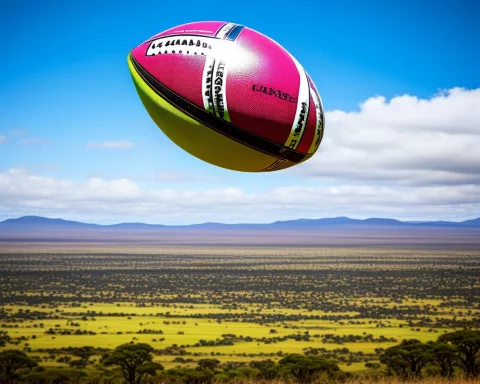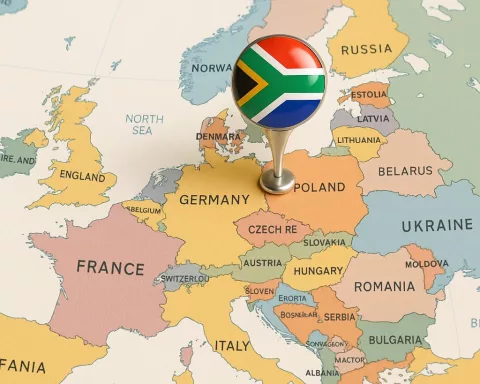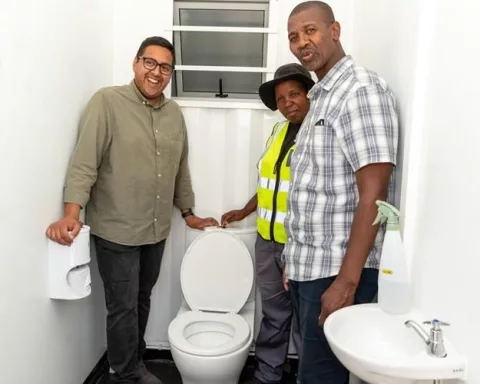Damian Willemse, a South African rugby player, is believed to earn no less than R10 million per season through a multi-faceted deal involving the union, the South African Rugby organization, and a third-party sponsor. He also became the brand ambassador for Ardagh Packaging in 2022. The intricate financial network surrounding his income has sparked disputes and debates, but ultimately, his financial adventure serves as an example of the interplay between sports, finance, and commerce.
What is Damian Willemse’s yearly income?
Damian Willemse’s yearly income is believed to be no less than R10 million per season, according to financial sleuths. This multi-faceted deal involves not just the union, but also the South African Rugby organization through the Players of National Interest contribution, and a third-party sponsor. Additionally, Willemse became the brand ambassador for Ardagh Packaging in 2022, adding to his income and reflecting the company’s ethical stance on social sustainability.
Unveiling the Finance behind Rugby
The captivating realm of rugby often presents a side narrative that competes with the excitement of the actual game, the intriguing financial aspect, especially for star players. This holds true for the highly admired South African rugby player, Damian Willemse. His remuneration has captivated many, leading to intense speculation and discreet investigations. Despite the determined efforts of the Stormers and Western Province to keep this information confidential, financial sleuths have managed to approximate Willemse’s yearly income.
Complex Earnings Structure
The plot thickens when we consider the complicated financial agreement that ensured Willemse’s commitment to Cape Town until at least 2027. This arrangement is a multi-faceted deal involving not just the union, but also the South African Rugby organization through the Players of National Interest (Poni) contribution, and a third-party sponsor. These diverse sources come together to form a financial fabric that is believed to afford Willemse a formidable package of no less than R10 million per season.
In 2022, Willemse added another noteworthy achievement to his portfolio when he became the brand ambassador for Ardagh Packaging. This partnership, revealed on Instagram, represented an enticing new phase in the narrative of both entities. By endorsing Willemse, Ardagh Africa not only provided him another opportunity to boost his income, but also expressed its commitment to South African communities, reflecting the company’s ethical stance on social sustainability.
Disputes and Debates
This intricate financial network may appear complex, but it’s important to highlight that John Dobson, the coach of the Stormers and Western Province, has openly expressed his opinion that the salaries of the players should remain confidential. According to Dobson, the income of the players should be respected as private. He also debunked the accusation that the financially strapped union was excessively investing in a solitary player as mere conjecture.
Regardless, Dobson’s judgment on Willemse’s value is unequivocal. He is steadfast in his belief that Willemse, a player they strived to hold onto, deserves every cent of his income, irrespective of the actual amount. Dobson underscored that Willemse’s cost to the Western Province is considerably less than the conjectured R5 million per year, asserting that even after the Poni contribution, it still falls short of the speculated sum.
The Interplay of Sport, Finance, and Commerce
As we navigate through the intricate maze of Willemse’s income, it’s clear that this young player’s financial adventure is as exhilarating as his performance on the rugby field. His narrative serves as an example of the complex relationship between sports, finance, and commerce. It gives us a glimpse into the covert world of player contracts, the wide array of income sources, and the measures teams take to secure premier talent.
Ultimately, Damian Willemse’s tale is about more than just numbers and agreements. It’s about the worth that an elite player brings to a team and the economic intricacies of professional sports. It’s about a young athlete who has established his worth as one of the highest earners in South African rugby and a team that trusts he’s worth every penny.
What is the Players of National Interest (Poni) contribution?
The Players of National Interest (Poni) contribution is a financial arrangement made by the South African Rugby organization to secure elite players to play in South Africa. The Poni contribution is an additional payment made by the organization to supplement the player’s income, ensuring that they stay in South Africa to play for their team.
Why did Damian Willemse become a brand ambassador for Ardagh Packaging?
In 2022, Damian Willemse became a brand ambassador for Ardagh Packaging, as the company values Willemse’s commitment to excellence and his influence as a role model in South Africa. Additionally, the partnership reflects the company’s ethical stance on social sustainability, as Ardagh Africa expressed its commitment to South African communities.
What is John Dobson’s opinion on the confidentiality of player salaries?
John Dobson, the coach of the Stormers and Western Province, believes that the salaries of players should remain confidential and respected as private. Additionally, Dobson debunked the accusation that the financially strapped union was excessively investing in a solitary player, viewing it as mere conjecture.
What is the economic significance of Damian Willemse’s financial adventure?
Damian Willemse’s financial adventure serves as an example of the complex relationship between sports, finance, and commerce. It gives insight into the covert world of player contracts, the different sources of income, and the measures teams take to secure top talent. Additionally, it highlights the worth that an elite player brings to a team and the economic intricacies of professional sports.
How much does Damian Willemse’s salary fall short of the speculated sum?
John Dobson underscored that even after the Poni contribution, Damian Willemse’s cost to the Western Province falls short of the speculated R5 million per year. He believes that Willemse’s income should be respected as private, and that regardless of the actual amount, Willemse deserves every cent of his income as a valuable player.












